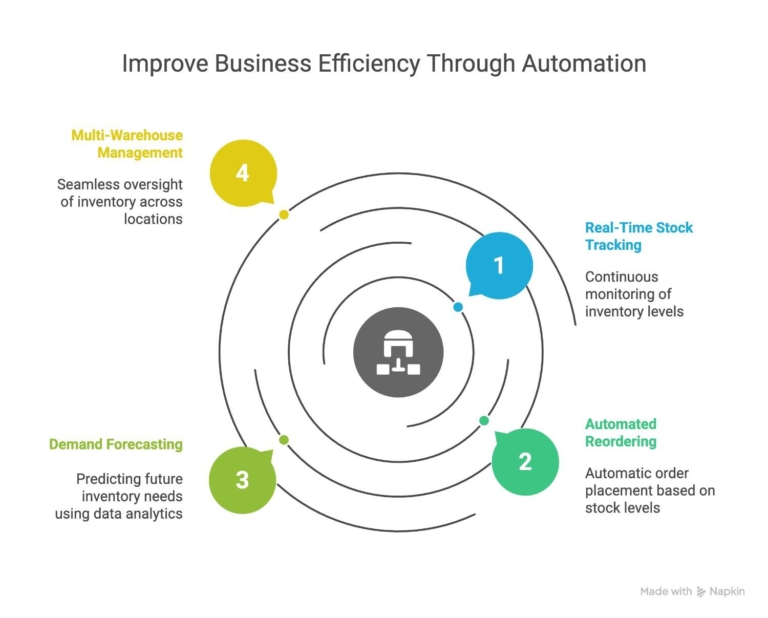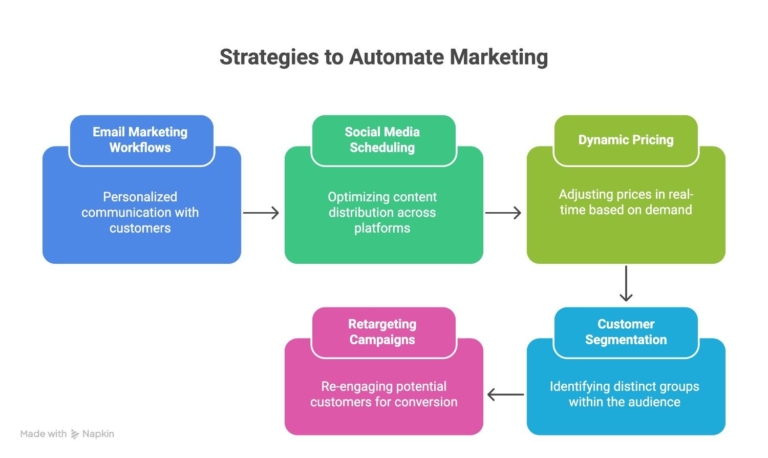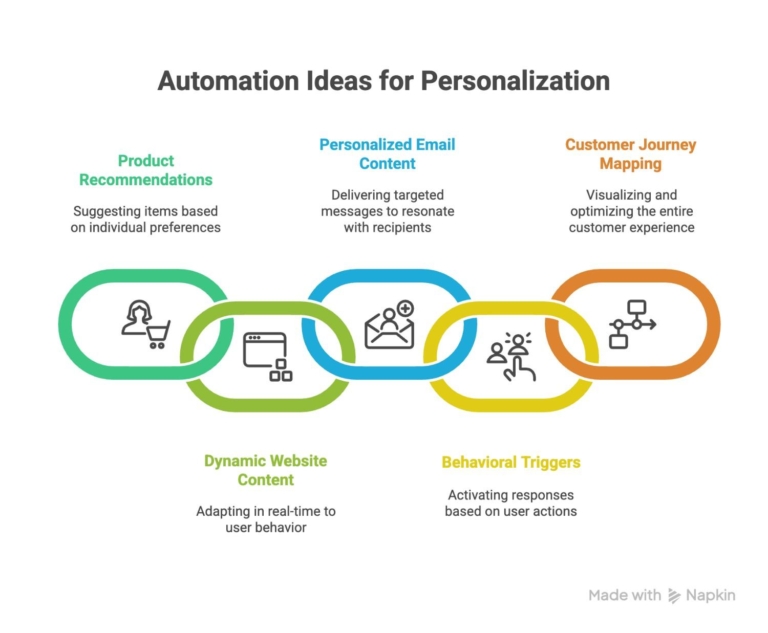Greetings! I'm Aneesh Sreedharan, CEO of 2Hats Logic Solutions. At 2Hats Logic Solutions, we are dedicated to providing technical expertise and resolving your concerns in the world of technology. Our blog page serves as a resource where we share insights and experiences, offering valuable perspectives on your queries.

Quick Summary
Stop wasting hours on repetitive tasks. E-commerce automation lets software handle your inventory tracking, email marketing, and customer personalization automatically. You’ll reduce errors, save time, and focus on growing your business instead of managing daily operations. Start with one area, set it up properly, and gradually expand to other parts of your business.
If you’re like most e-commerce business owners, you probably started your day checking inventory levels, responding to customer emails, and updating product listings. You’ve spent hours on tasks that don’t directly grow your business, but still need to get done.
Many online store owners get stuck doing the same repetitive tasks every day. This will hinder the focus on what really matters: growing sales and improving their business.
That’s where e-commerce automation comes in. It’s basically using software to handle the routine stuff automatically, so you can spend your time on bigger picture decisions. This guide will walk you through automating three major areas you lost most of your time. Managing inventory, marketing to customers, and creating personalized shopping experiences.
What Is E-Commerce Automation?
E-commerce automation refers to using software tools and systems to automatically perform repetitive tasks in your online business. Instead of manually updating inventory, sending marketing emails, or responding to customer inquiries, automated systems handle these processes based on predefined rules and triggers.
The benefits are substantial. This will results in reduced human error, improved efficiency, better customer experiences, and more time for strategic business decisions. Most importantly, automation helps you scale your operations without proportionally increasing your workload.
Ways to Automate Inventory Management
Inventory management is often the most time-consuming aspect of running an e-commerce business. When you are manually tracking leads, you have to deal with stockouts, overstocking, and lost sales opportunities.
But the solution is automation, learn how automation helps you to transform inventory management:

Real-Time Stock Tracking
Automated inventory systems helps to sync across all your sales channels. When a product sells on your website, the inventory automatically updates on marketplaces like Amazon, eBay, and social media platforms. This prevents overselling and maintains accurate stock levels everywhere you sell.
Automated Reordering
Set up automatic purchase orders based on reorder points, sales velocity, and lead times. The system monitors your inventory levels and automatically generates purchase orders when stock reaches predetermined thresholds. This ensures you never run out of bestselling products while avoiding excess inventory of slow-moving items.
Demand Forecasting
Advanced inventory automation uses historical sales data, seasonal trends, and market analysis to predict future demand. This helps you make informed purchasing decisions and prepare for busy seasons or promotional campaigns.
Multi-Warehouse Management
If you operate multiple warehouses or use fulfillment centers, automation coordinates inventory allocation across locations. The system automatically routes orders to the nearest warehouse with available stock, reducing shipping costs and delivery times.
See how we helped a dropshipping business automate their entire order processing workflow and saved them 6-8 hours of manual work daily.
Marketing Automation Strategies
Marketing automation transforms how you connect with customers throughout their journey. Instead of manually sending individual emails or managing social media posts, automated systems deliver targeted messages at the right moments.

Email Marketing Workflows
Create sophisticated email sequences that trigger based on customer behavior. Welcome series for new subscribers, abandoned cart recovery emails, post-purchase follow-ups, and re-engagement campaigns all run automatically. These workflows nurture leads and drive repeat purchases without constant manual intervention.
Social Media Scheduling
Plan and schedule your social media content weeks or months in advance. Automation tools post content at optimal times across multiple platforms, respond to common customer inquiries, and even curate relevant content from other sources.
Dynamic Pricing
Implement automated pricing strategies that adjust based on competitor prices, demand fluctuations, and inventory levels. This ensures you remain competitive while maximizing profit margins.
Customer Segmentation
Automatically segment customers based on purchase history, browsing behavior, demographics, and engagement levels. These segments enable highly targeted marketing campaigns that resonate with specific customer groups.
Retargeting Campaigns
Set up automated retargeting ads that follow website visitors across the internet. These campaigns remind potential customers about products they viewed and encourage them to complete their purchase.
Ready to stop doing repetitive tasks manually?
Personalization Through Automation
Modern customers expect personalized experiences, but delivering individual attention to thousands of customers seems impossible without automation. Here’s how to scale personalization:

Product Recommendations
Implement recommendation engines that suggest products based on browsing history, purchase patterns, and similar customer behavior. These automated suggestions appear on product pages, in emails, and during checkout to increase average order value.
Dynamic Website Content
Show different website content to different visitors based on their location, previous purchases, or browsing behavior. First-time visitors might see introductory offers, while returning customers see loyalty rewards or complementary products.
Personalized Email Content
Beyond basic segmentation, advanced email automation personalizes subject lines, product recommendations, and content based on individual customer data. Each subscriber receives emails tailored to their preferences and behavior.
Behavioral Triggers
Set up automated responses to specific customer actions. When someone abandons their cart, views a product multiple times, or reaches a spending threshold, automated systems can trigger appropriate responses like discount offers or product suggestions.
Customer Journey Mapping
Automate touchpoints throughout the customer journey, from initial awareness through post-purchase support. Each interaction builds on previous ones, creating a cohesive and personalized experience.
Tired of running out of stock or ordering too much inventory?
How to Measure Your Automation Success
Track these key metrics to evaluate your e-commerce automation performance:
Efficiency Metrics: Time saved on manual tasks, reduction in human errors, and improved process speed indicate successful automation implementation.
Financial Impact: Monitor changes in revenue per visitor, average order value, and customer lifetime value. Successful automation should positively impact these metrics.
Customer Experience: Track customer satisfaction scores, support ticket volume, and response times. Good automation improves customer experiences without feeling impersonal.
Operational Metrics: Measure inventory turnover rates, stockout frequency, and order fulfillment speed to assess operational improvements.
Learn how to save time and money with automation
Conclusion
E-commerce automation isn’t just about saving time. It’s about building a more efficient, scalable, and customer-focused business. By automating inventory management, you ensure product availability while optimizing costs. Marketing automation delivers the right message to the right customer at the right time. Personalization automation creates individual experiences at scale.
Take the first step today with AI Development Experts to identify your biggest operational challenge and exploring automation solutions. Your future self, and your customers will thank you for making the investment in e-commerce automation.

Related Articles







